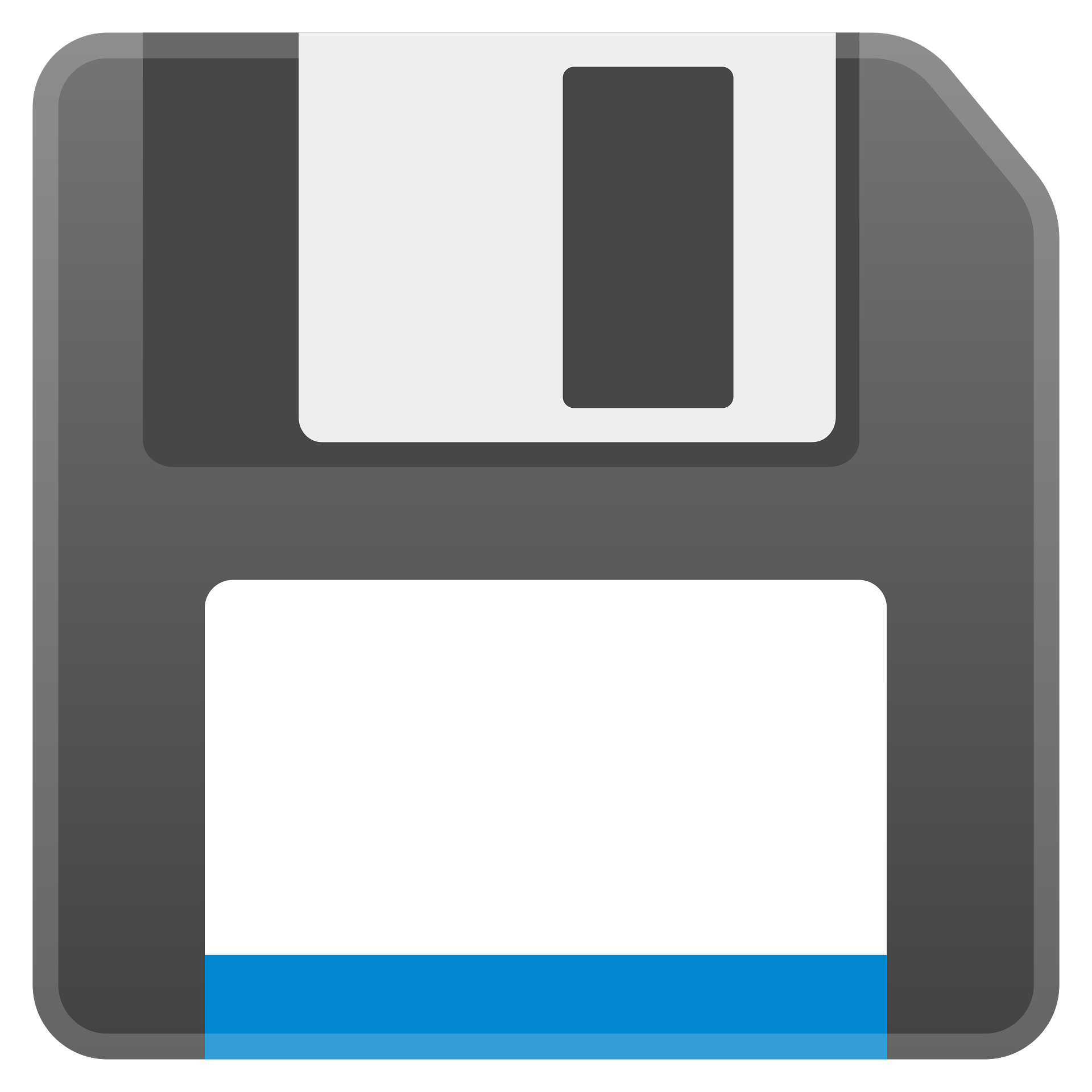
This image has format transparent PNG with resolution 1920x1920.
You can download this image in best resolution from this page and use it for design and web design.
Floppy disk PNG with transparent background you can download for free, just click on download button.
A floppy disk or floppy diskette (sometimes casually referred to as a floppy or diskette) is a type of disk storage composed of a thin and flexible disk of a magnetic storage medium in a square or nearly square plastic enclosure lined with a fabric that removes dust particles from the spinning disk. Floppy disks store digital data which can be read and written when the disk is inserted into a floppy disk drive (FDD) connected to or inside a computer or other device.
The first floppy disks, invented and made by IBM, had a disk diameter of 8 inches (203.2 mm). Subsequently the 5¼-inch and then the 3½-inch became a ubiquitous form of data storage and transfer into the first years of the 21st century. 3½-inch floppy disks can still be used with an external USB floppy disk drive. USB drives for 5¼-inch, 8-inch, and other-size floppy disks are rare to non-existent. Some individuals and organizations continue to use older equipment to read or transfer data from floppy disks.
Floppy disks were so common in late 20th-century culture that many electronic and software programs continue to use save icons that look like floppy disks well into the 21st century. While floppy disk drives still have some limited uses, especially with legacy industrial computer equipment, they have been superseded by data storage methods with much greater data storage capacity and data transfer speed, such as USB flash drives, memory cards, optical discs, and storage available through local computer networks and cloud storage.
The core of the 3½-inch disk is the same as the other two disks, but the front has only a label and a small opening for reading and writing data, protected by the shutter—a spring-loaded metal or plastic cover, pushed to the side on entry into the drive. Rather than having a hole in the center, it has a metal hub which mates to the spindle of the drive. Typical 3½-inch disk magnetic coating materials are:
Two holes at the bottom left and right indicate whether the disk is write-protected and whether it is high-density; these holes are spaced as far apart as the holes in punched A4 paper, allowing write-protected high-density floppies to be clipped into standard ring binders. The dimensions of the disk shell are not quite square: its width is slightly less than its depth, so that it is impossible to insert the disk into a drive slot sideways (i.e. rotated 90 degrees from the correct shutter-first orientation). A diagonal notch at top right ensures that the disk is inserted into the drive in the correct orientation—not upside down or label-end first—and an arrow at top left indicates direction of insertion. The drive usually has a button that, when pressed, ejects the disk with varying degrees of force, the discrepancy due to the ejection force provided by the spring of the shutter. In IBM PC compatibles, Commodores, Apple II/IIIs, and other non-Apple-Macintosh machines with standard floppy disk drives, a disk may be ejected manually at any time. The drive has a disk-change switch that detects when a disk is ejected or inserted. Failure of this mechanical switch is a common source of disk corruption if a disk is changed and the drive (and hence the operating system) fails to notice.
One of the chief usability problems of the floppy disk is its vulnerability; even inside a closed plastic housing, the disk medium is highly sensitive to dust, condensation and temperature extremes. As with all magnetic storage, it is vulnerable to magnetic fields. Blank disks have been distributed with an extensive set of warnings, cautioning the user not to expose it to dangerous conditions. Rough treatment or removing the disk from the drive while the magnetic media is still spinning is likely to cause damage to the disk, drive head, or stored data. On the other hand, the 3½‑inch floppy has been lauded for its mechanical usability by human–computer interaction expert Donald Norman:
A simple example of a good design is the 3½-inch magnetic diskette for computers, a small circle of floppy magnetic material encased in hard plastic. Earlier types of floppy disks did not have this plastic case, which protects the magnetic material from abuse and damage. A sliding metal cover protects the delicate magnetic surface when the diskette is not in use and automatically opens when the diskette is inserted into the computer. The diskette has a square shape: there are apparently eight possible ways to insert it into the machine, only one of which is correct. What happens if I do it wrong? I try inserting the disk sideways. Ah, the designer thought of that. A little study shows that the case really isn't square: it's rectangular, so you can't insert a longer side. I try backward. The diskette goes in only part of the way. Small protrusions, indentations, and cutouts prevent the diskette from being inserted backward or upside down: of the eight ways one might try to insert the diskette, only one is correct, and only that one will fit. An excellent design.
In this clipart you can download free PNG images: Floppy disk PNG images free download